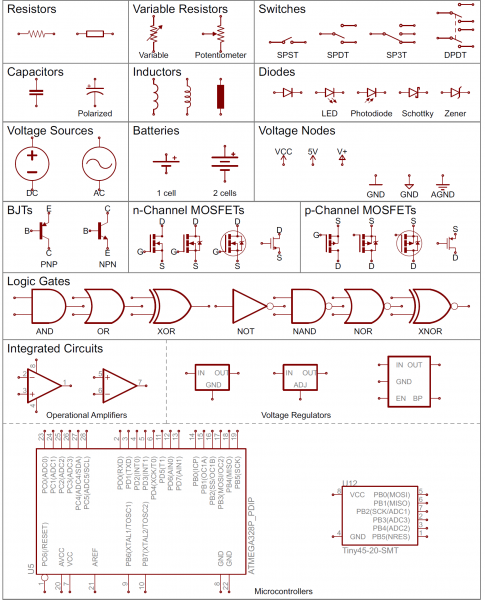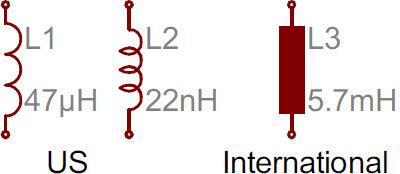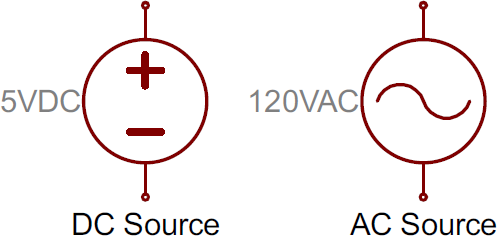I always find it so funny when people complain about how expensive cars are.
“Whaaa! Gas is so expensive!”
“Blah blah blah, mechanic fees, blah blah blah.”
“Ahh! Insurance is such a ripoff!”
The latest stats from AAA say that it costs the average American $9,122 to drive every year. People are up in arms about it.
Those numbers are insane, but I can’t relate to any of the complaints. Driving cars has never been expensive for me. In fact, my car now earns me money every month. (Yes, really.)
This is because I do my own maintenance, usually bike short distances, rent my car out when I’m not using it, and do a tiny amount of work each year that allows me to get incredibly cheap insurance (<$50/month and dropping fast).
Over the course of several articles, I’m going to teach you how a Smart Riskologist drives for cheap or free. Today, we’re going to kick things off by dramatically lowering your insurance premiums.
15 Tactics to Lower Your Car Insurance by Thinking Like an Insurance Agent
Insurance is a sucker’s game. The only way to win is to buy as little of it as you can to avoid major losses and self-insure for the little things.
The following are 15 tricks that you, a Smart Riskologist, can use to slash your car insurance premiums along with your need to complain about how expensive cars are.
How many are you smart enough to put into action?
1. Drive a shitty car.
You cannot be a Smart Riskologist if you drive a brand new car. This is not my frugal opinion; it’s a fact. Put any group 10 economists in a room together, and they’ll disagree on pretty much everything except that buying a new car is a dumb consumer move.
I don’t care who you are, there is no way to make owning a brand new car pan out financially. This is especially true when it comes to lowering your insurance bill.
Owning a fancy new car will also land you the most expensive insurance policy to cover it, even if you have a liability-only policy.
To understand why, just think like an insurance agent would. What would you charge a friend if they asked you to pay for any damage they do to their brand new Corvette? Now, what if they were driving a nicely maintained Toyota Camry that’s a few years old?
Which car is more likely to be driven responsibly, resulting in a lower risk of accident?
2. Own your car! (Like, actually own it)
If you lease your car, you’re already paying too much for insurance (and everything else associated with driving).
Why? Because when you don’t own your car, you don’t get to set the rules about what type of insurance you’ll buy—the person or company who owns it does. And businesses that allow other people to drive their cars are notoriously conservative.
Wouldn’t you be? Would you let your friend borrow your brand new car for 5 years without getting an insurance policy that would replace it if they crashed?
If you lease your car, no leasing agent is going to let you drive their car around without a guarantee that if you crash, they won’t have to pay anything to replace it. You’ll be required to have comprehensive insurance which is, in every instance, a giant waste of money.
If you’re thinking, “Aha, I’m so smart! I skipped the lease and got a loan to buy my car!” you’ve still been had. If you have a loan, you still don’t own your ride! The bank does, and they’ll be setting the rules for your insurance policy until you pay them back every last dollar you owe on it (which is, of course, more than the car was ever worth).
If you want to set the rules for what type of insurance policy you take out on your car and get the lowest rate, buy it outright. If you can’t afford to buy your car with cash, you can’t afford to drive. Keep toning that sexy body on your bike for now.
3. Never purchase comprehensive insurance.
There are two types of car insurance: Liability only and comprehensive. One covers damage you to do other cars, property and people. The other covers, well, everything else. The only thing you need to remember to drastically lower your insurance cost is this: NEVER buy comprehensive insurance.
Comprehensive insurance is for suckers who can’t afford their cars. Since you’re a Smart Riskologist, you bought a nice, reliable ride with a small portion of your available cash, and now you’re free to purchase whatever insurance policy you like.
And damn it, the policy you like is going to be a simple, no frills liability only one that’s a fraction of the cost of comprehensive, you handsome and intelligent insurance shopper, you.
4. Choose the minimum coverages and select the highest deductible possible.
Repeat after me: “I cannot beat the insurance company. They will always win in the end. The only way to level the playing field is to pay as little as possible for the coverage I’m required to have.”
Good job. You now understand the most basic rule of insurance. Never forget it.
So many people are reamed by their insurance company every year because they don’t understand simple math. As a Smart Riskologist, you must vow to never allow yourself to be one of them!
When you purchase your auto policy, buy the minimum coverage your state allows, and check that your health insurance covers auto accidents (usually it will).
“But what if I hurt somebody else?” you ask.
Great question, fellow Riskologist. The answer is:
Even the minimum liability insurance coverage will cover the most likely injuries to another person.
“But what if the worst possible thing ever happens, and I seriously injure a million people!?”
Fear not, fellow Riskologist. Could this happen? Yes. Will it? Probably not! Properly playing the insurance game means planning for the most likely scenarios. Statistics are your friend! To lower you risk even further, stop driving to places you can walk or bike to, lazy bones!
5. Drive less often/lower your annual mileage.
In addition to the car you drive and the insurance you purchase, there are some simple things you can do that make insurance agents actually want to throw cash at you like you’re their favorite stripper. Driving less is one of these things.
An insurance underwriter is concerned with just one question: how likely are you to cause a wreck and cost them a lot of money?
One of the biggest factors they’re going to consider is how much you actually drive. When you’re not in your car, you’re not a risk to your insurance company.
My insurance policy is based on the lowest tier of miles traveled each year—less than 5,000—and I save a boatload of money for it. This is because your odds of being in a wreck increase linearly as you drive more miles. So, cutting the amount of miles you drive by 50% equally lowers your risk of an accident by 50%. Less exposure = less risk.
Get a job closer to home!
Stop driving to the convenience store down the street!
Go for a walk instead of a drive!
Anything you can do to lower the miles you travel each year will lower your auto insurance risk and, therefore, your premium.
You might even look into auto policies that only charge you when you’re actually driving. I looked into MetroMile but, at the time of this writing, they weren’t competitive for me compared to a standard policy.
6. Improve your credit score.
Did you know an insurance company can predict how likely it is you’ll cause a traffic accident by looking at your credit score? They can! If that sounds ridiculous (many people complain about this), the correlation actually makes sense:
People who are less likely to cause accidents tend to be more careful drivers. And people who have higher credit scores tend to be more careful with their money. “Careful” is the operative word.
I don’t know how much you can save (or be dinged) based on your credit score, but the prescription for a lower insurance bill is clear: improve your credit and reapply.
Not sure how to improve your credit score? Try becoming a more careful driver! Clearly, they’re related.
7. Request citations be removed from your record.
When I was younger, one of my hometown’s finest decided that slowing down to 3 mph at the stop sign miles out in the country in the middle of the night with perfect visibility and no cars to be seen was simply not good enough. (No, I’m not bitter.) He informed me of his disapproval with a $200 ticket.
Since it was my first infraction, I paid the fine and the judge let me take a safe-driving class in exchange for striking the ticket from my record. I held up my end of the bargain, but when I went to apply for insurance again a year later and received an absurdly expensive quote, I learned the local court didn’t hold up theirs!
A quick phone call to the city sorted it out and, a month later, I re-applied and received a quote that was $30/month less.
8. Take a defensive driving class.
Taking a defensive driving course triggers one of the most lucrative discounts you can get for your insurance premium.
Why? Because the most important question every single insurance company asks when they give you a policy is, “Will this person cause an accident and cost us a lot of money?”
By taking a defensive driving class, you prove not only that you’re willing to learn how to be a safe driver, but that you’re probably a pretty safe driver already, since unsafe drivers are not the type who think about taking defensive driving classes.
9. Shop for a better rate every year.
This one tactic alone will probably save you more on your car insurance premium than all the other tips combined if you remember to do it every year.
Insurance companies are, first and foremost, businesses. And they’re smart businesses that charge their customers as much as they’re willing to pay for a service that they will rarely, if ever, use.
They know the longer you stay with them, the more you’ll be willing to pay for the convenience of not having to shop around for another provider, so they slowly raise your premiums over time.
They are also extremely interested in stealing customers away from their competitors by offering unsustainably low rates to good drivers to get them to switch.
This is the perfect combination for massive savings. Set a reminder in your calendar once a year to request car insurance quotes from three providers, and you’ll be swimming in coins you didn’t have to send to your insurance company.
This step is incredibly important if you’ve had a big life change in the last year that could potentially lower your insurance like getting married, buying a house, passing 3 years since your last traffic ticket, or turning 25.
10. Pre-pay your policy as much as possible.
Everyone knows insurance agents love money and statistics just a bit more than the rest of us. And that’s why they know that money today is worth more than money in the future, and they’re willing to give you a reasonable discount to get their hands on it now.
You’ll always get the best insurance rate by paying as much of your premium up front as possible. Six months is usually the maximum.
Smart Riskologist Rule: If you cannot afford to pay your 6-month premium at once, you cannot afford your car. Sell it and start over!
If you’re able to pay your 6-month premium all at once, it probably says that you manage your money well, which says that you probably have better credit, which says that you’re a lower accident risk, which says that you’re worth the investment of a lower premium! (Yes, I know it doesn’t actually work this way).
11. Request every discount possible.
Every insurance company has a laundry list of obscure discounts you may qualify for but they don’t do a lot of advertising for. Here are some common ones you can ask your agent about:
Occupational Discount: Some professions like policeman, firefighter, doctor, dentist, nurse, and teachers qualify for special discounts because they tend to drive less and/or take fewer risks. Smart Riskologist trick: If your occupation could technically fit a number of different fields, try filling out your application with each one to see which produces the lowest premium.
Affiliation Discounts: Were you ever in a fraternity or sorority? Member of your state’s bar or any other professional group? There could be a discount for you. Ask for it!
Paperless Statement Discount: It costs money to stuff and mail envelopes, and some insurance companies will give you a discount if you opt for paperless statements.
Armed Forces Discount: If you are or ever have been in the military, many insurance companies will offer you a discount. I have no idea if this is based on actuarial tables or if it’s just gratitude.
Garage Parking Discount: If you park your car in a garage instead of a driveway or on the street, it’s at a lower risk of theft/vandalism, and you can get a discount accordingly. Only applies to suckers with comprehensive insurance.
Anti-Theft Discount: Ask your provider if you can get a discount for having an anti-theft system installed in your car. Only applies to suckers with comprehensive insurance.
Good Student Discount: If you’re in school and you have good grades, you’re probably a lower insurance risk; most providers will give you a better deal if this is the case.
Early Switch Discount: As a marketing tool, some insurance companies offer a discount if you switch to their service at least 2 weeks before your current policy expires.
Not sure what discounts your insurance company offers? It’s easy to find out. Just call them up and ask, “Hey, what are all the possible discounts I could qualify for?” They’re happy to tell you.
12. Get married!
Insurance companies love married couples because married people are more likely to settle down and drive like responsible adults.
Also, married couples tend to have kids. Putting a kid in your car is a better predictor of good driving habits than having your insurance agent sitting in the back seat with a clipboard.
Domestic partnerships can also qualify if that’s your situation.
Important side note: I don’t recommend getting married for the insurance discounts. That’s not very romantic and could lead to financial penalties in the future far greater than any insurance discount!
13. Stop driving until you’re at least 25.
If you’re under 25, you’re a stupid driver and car insurance companies hate you. Whoa, there! Don’t get so angry! I’m not talking about you! I’m just saying, statistically speaking, you and all your friends suck at driving.
1/3 of all traffic related deaths each year are under 25-years-old. That is way out of proportion, and insurance companies are betting on you killing yourself or someone else with a car. And traffic deaths are freaking expensive (yes, and tragic)!
Luckily, the statistics start to even out at 25, so if you can make it that long, you’ll enjoy lower insurance rates from every insurance company.
14. Move to a rural area.
There are lots of reasons to live outside the city, and one pretty good one is that you’re less likely to smash your car into someone else’s.
Remember: Your insurance rate is based almost entirely on population statistics. And where there are fewer people driving around, there are fewer potential collisions. This translates to lower insurance rates for people living in rural areas.
15. Purchase your home.
This is another one of those things that’s a good indicator of someone becoming a boring, responsible adult, and insurance companies love boring, responsible adults because they make fantastic customers.
For the past 10 years or so, these numbers have been wildly inaccurate since all kinds of irresponsible people bought houses they couldn’t afford. But, in general, owning your home is a sign of financial success. Financial success traditionally requires a high degree of responsibility. And responsible people don’t crash their cars as often as irresponsible people.
The numbers (usually) don’t lie!
Yours in cheap car insurance,
signature
Founder, AR



















